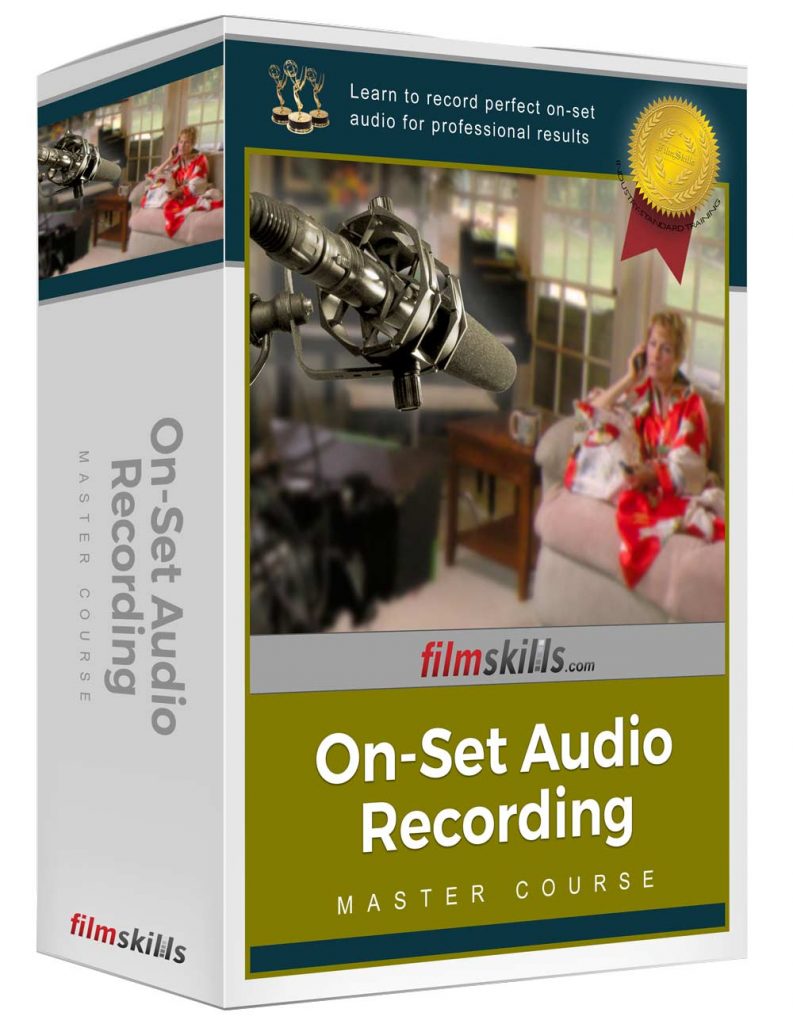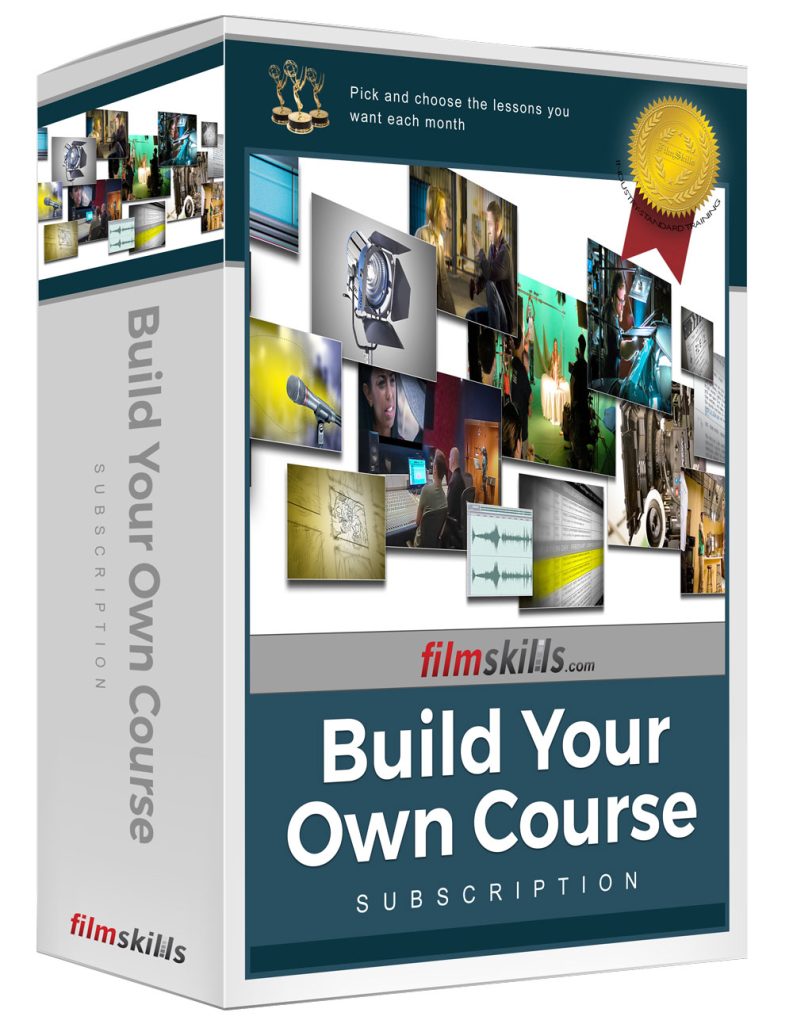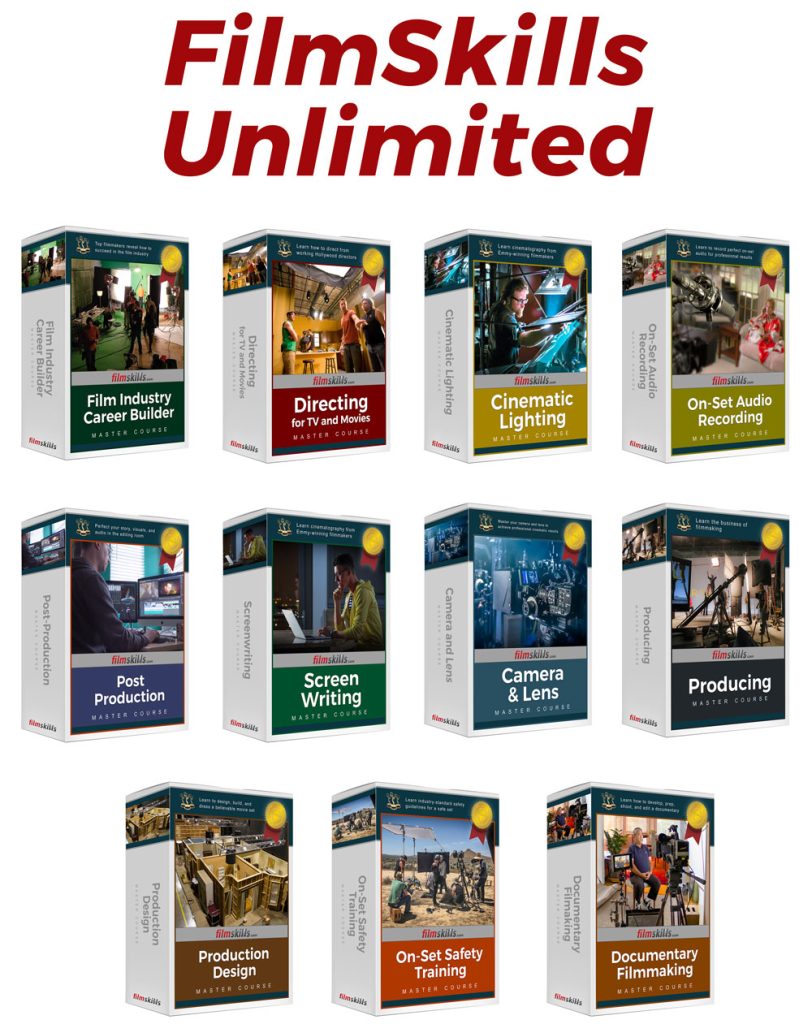The Complete Filmmaking Curriculum
Over a hundred Hollywood professionals helped build a comprehensive filmmaking curriculum.

Audio Recording
Experience the step-by step approach to recording high-quality audio on set, from choosing the right microphones to learning how to use a boom mic. Leading audio experts including the head of Apple Audio and inventor of THX Tom Holman, teach skills they learned over a lifetime career
The Physics of Sound
In this module we’re going to look at the physics of sound – the sound wave, how it can be measured and ultimately, how it is used to create emotion through story. (26:01)
Audio Pre-Production
Learn how to prepare for a shoot by breaking down the script, determining the best equipment to use and how to address complex scenes. (24:52)
How Microphones Work
Microphones convert sound energy into electrical energy and can do so in different ways. You will learn how microphones capture sound, how that sound is converted into energy and the strengths and weaknesses of each microphone type. (23:52)
Microphone Pick-Up Pattern
Learn the different types of pick-up patterns, how they capture sound, and which to choose when recording audio. We will explore omnidirectional, cardioid, hypercardiod, figure-of-8, multipattern mics and much more. (19:10)
The Microphone Boom
The boom mic is one of the most common ways to record good on-set audio. In this module you will learn how to choose the proper boom pole, the various types of shock mounts and wind reduction tools. Recording excellent audio begins with having the right tools. (19:09)
Boom Operating Techniques
At first glance, the boom mic seems to be fairly simple and straightforward to operate. In actuality, however, it is a very tricky skill which balances the ideal mic placement with the movements of the operator. So in this module, we’re going to look at proper technique for using a boom pole to record on-set audio. (23:02)
Watch a free lesson from this series
Location Recording Techniques
Recording location sound is a challenging process - and the decisions you make on set can either make the post-production process easy, or can cost tens of thousands of dollars. In this lesson, we’re going to look at how to properly prepare for a shoot - the type of gear you’ll need, how to conduct a location scout and tips for minimizing location noise. (28:17)
Lavalier Microphones
Lavalier mics are small condenser microphones that can be worn on the body or hidden on set. In this module, we’re going to look at the various types of lavalier microphones, how best to use them and their limitations. (20:33)
Recording the Audio
Once the microphone picks-up sound, it is then encoded into either an analog or digital signal, then recorded to a device. With advancements in technology, the quality of the recorded signal can be virtually indistinguishable from the original sound. In this module, we explore how sound is recorded and encoded. (37:58)
Audio Configurations
Audio can be recorded many ways - directly into the camera, through a mixer, and/or to a separate recording device. In this module, you will learn common techniques for recording sound, how to manage line/mic level inputs, work with dumb and smart slates, and work with timecode. (23:35)
Cables and Adapters
It’s so easy to focus on the specifications and quality of both the microphone and the recording device that you forget about the cables that connect them. Cables, although seemingly the least interesting equipment, can make or break your shoot. In this module, we’re going to look at the types of cables, and connectors, when to use them and how to care for them. (21:16)


